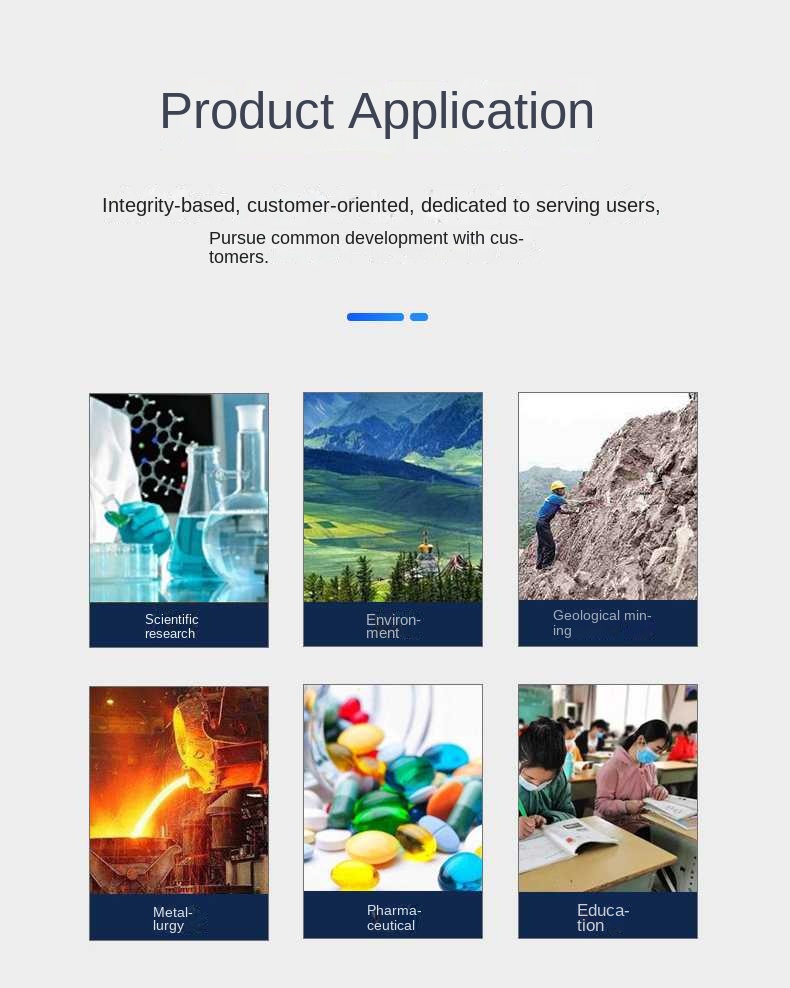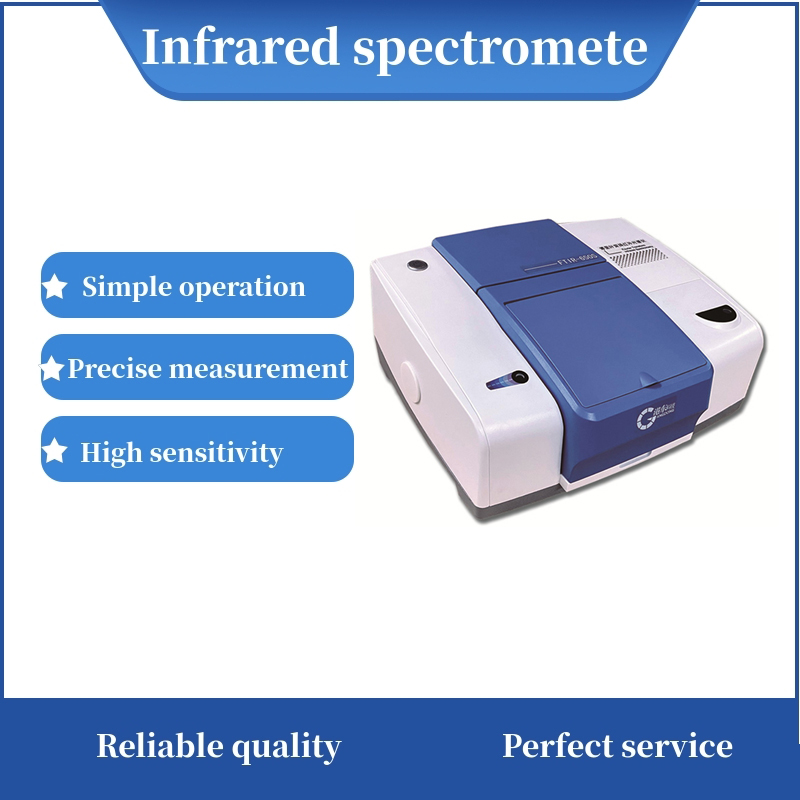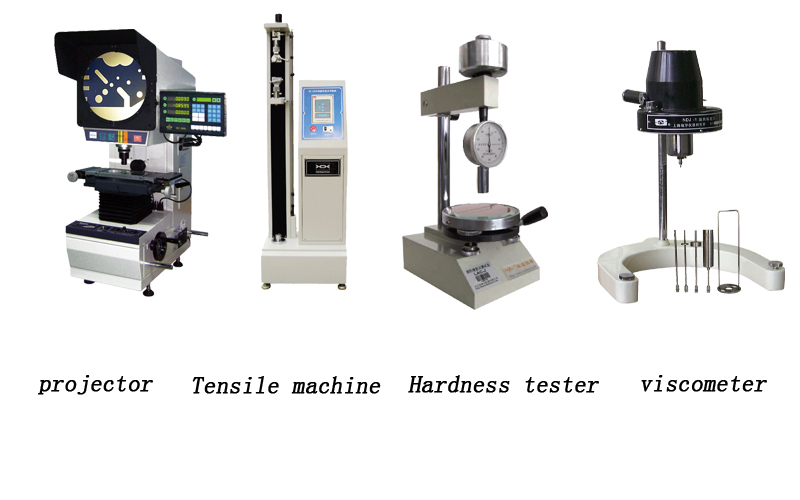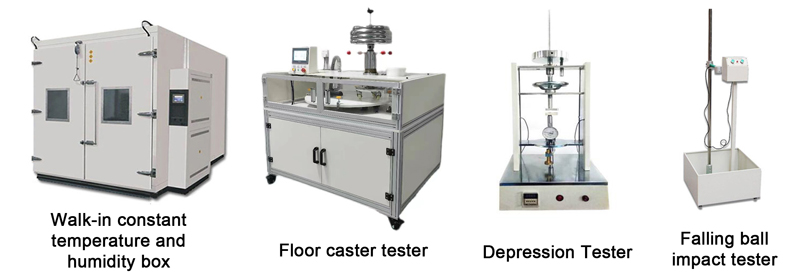The spectrometer is used in dyeing and weaving industry, environmental science, biology, materials science, polymer chemistry, catalysis, coal structure research, petroleum industry, biomedicine, biochemistry, pharmacy, basic research of inorganic and coordination chemistry, semiconductor materials, daily chemical industry and other research fields.

Notes for use of infrared spectrometer:
1, the laboratory temperature should be measured in 15~30℃, the relative humidity should be below 65%, the power supply should be equipped with a voltage regulator and grounding wire. Because the relative humidity of the room should be strictly controlled, the area of the infrared laboratory should not be too large, and the necessary instruments and equipment can be put down, but the indoor dehumidification device must be installed.
2. If you are using a single light Fourier infrared spectrophotometer (which is widely used in recent years), the CO2 content in the laboratory should not be too high, so the number of people in the laboratory should be as small as possible, it is best not to enter, and proper ventilation should be paid attention to.
3. If the test product is hydrochloride, considering the possible ion exchange phenomenon in the process of tablet pressing, the standard stipulates that potassium chloride (also used after pretreatment like potassium bromide) should be used instead of potassium bromide for tablet pressing, but the spectra measured after potassium chloride tablet pressing and potassium bromide tablet pressing can also be compared. If there is no difference between the two, potassium bromide can be used for tablet pressing.
4. In order to prevent moisture from affecting the service life of the instrument, the infrared laboratory should be kept dry frequently. Even if the instrument is not used, it should be started at least twice a week for half a day each time, and the humidifier should be expelled for dehumidification. Especially in the season of mildew and rain, it is best to fire the wet machine every day.
5. The most commonly used sample preparation method for infrared spectroscopy is potassium bromide (KBr) tablet method (more than 90% of the pharmacopoeia varieties use this method), so in order to reduce the influence on the determination, the best KBr should be optical reagent grade, at least to analyze pure grade. Before use, it should be properly ground (less than 200 mesh), and at 120℃ for more than 4 hours after drying in a dryer for use. If clumps are found, they should be redried. The prepared empty KBr plate should be transparent, and the transmittance should be more than 75% compared with air.
6, tablet method to take the test quantity is generally 1~2mg, because it is impossible to use the balance after weighing, and each sample of the infrared light absorption degree is not consistent, so often by experience. Most of the absorption peaks are in the transmittance range of 10%~80%. If the transmittance of the strongest absorption peak is too large (e.g., greater than 30%), the sampling amount is too small. On the contrary, if the strongest absorption peak is close to the transmittance of 0% and is flat head peak, it indicates that the sampling amount is too much. At this time, the sampling amount should be adjusted and remeasured.
7. The sample used for testing should be dried, otherwise it should be dried for a few minutes under a red light after grinding. After the sample is ground and installed in the mold, it should be connected with the vacuum pump and pumped for at least 2 minutes to further remove the water in the sample, and then pressed to 0.8~1GPa(8~10T/cm2) and maintained for 2~5min. No vacuum will affect the transparency of the film.
8. The amount of KBr taken during tablet pressing is generally about 200mg (also based on experience), and the amount of KBr should be controlled according to the thickness of the film after production. Generally, the thickness of the film should be below 0.5mm.
9. When pressing the tablet, the test product should be finely ground first and then added to KBr to finely ground again, so that it is easier to mix. The agate mortar should be used for grinding, because the inner surface of the glass mortar is rough and easy to adhere to the sample. Grinding should be in the same direction (clockwise or counterclockwise) uniform force, if not grinding in the same direction, it may cause the test product to produce crystal in the grinding process, thus affecting the measurement results. The grinding force should not be too strong, and the small particles visible to the naked eye can be ground in the sample. After the sample is finished, it should be poured into the tablet die through a small funnel (because the mold mouth is small, direct pouring is difficult), and try to spread the sample evenly, otherwise the transparency of the less sample after the tablet is lower than the place where the sample is more, and therefore affect the determination. In addition, if there are opaque white dots on the pressed film, it indicates that there are small particles in the pressed sample, which should be pressed again.
10. After the die is used, all parts should be wiped immediately. If necessary, clean and dry with water, and store in the dryer to avoid corrosion.

If you need to buy the company's spectrometer, welcome to the mail to inquire, more quality products welcome new and old customers to inquire!


Website: https://www.instrumentvip.com/
Tel: 86+13712847488
Contact person: Mr. Zheng

